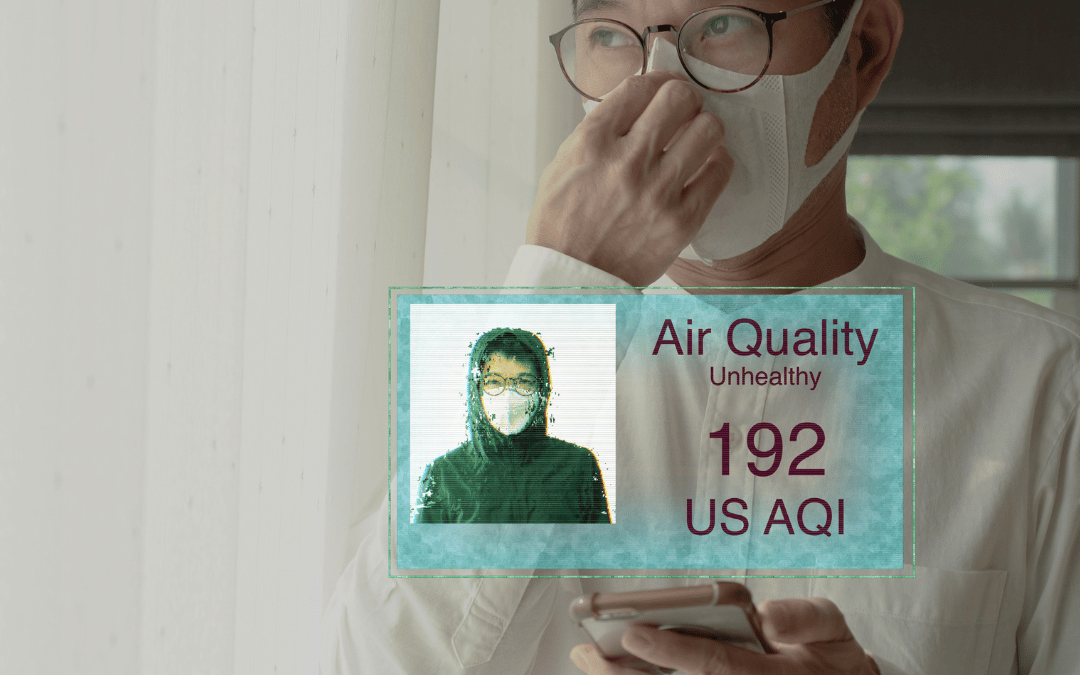Worldwide, poor air quality negatively affects all of our health on a daily basis. Airborne particles from wildfire ash, factories, power plants, vehicle exhaust, soil dust, pollen, and an assortment of other pollutants all contribute to the overall quality of our air. While most of society goes about their daily business in the midst of these harmful air pollutants, some of us face elevated health risks when inhaling dangerous particulate matter. Fortunately, there’s steps we can take to protect our health when the daily AQI reaches unhealthy levels. Let’s explain the purpose of AQI (Air Quality Index) and how to understand its categorization methods.
Measuring Five Pollutants
The Air Quality Index (AQI) is a rating system originally developed by the U.S. Environmental Protection Agency (EPA). In more than 800 countries, air pollution levels are measured daily and ranked on the official AQI scale. The National Ambient Air Quality Standard (NAAQS) sets a criteria to determine air quality based off the combined levels in the following pollutants:
- Particulate Matter (PM2.5 & PM10): Elderly individuals, children, and people with respiratory issues or heart disease are most at risk.
- Ground-Level Ozone (O3): Children and people with asthma are most at risk.
- Sulfur Dioxide (SO2): People with asthma are most at risk.
- Carbon Monoxide (CO): People with heart disease are most at risk.
- Nitrogen Dioxide (NO2): Children and people with respiratory disease are most at risk.
When any of these individual pollutants rank as “unhealthy”, health effects can range from mild to severe. While some individuals may experience mild effects, such as eye or throat irritation, other people may face reactions such as heart or respiratory issues. Particulate matter, for example, is impossible to perceive with the human eye, although inhaling these microscopic specs can result in cancer, respiratory infections, and even heart attacks. When assessing the daily AQI in your area, it’s important to evaluate which specific pollutants are high for that day and take precautions to better help protect your health.
Categorizing Air Quality Index
When combined, the aforementioned five pollutants determine a total AQI value. Categorized into six color-coded and numerical categories, understanding how to read this index can benefit people worldwide to better protect themselves from the harmful effects of air pollution. The official AQI rating system can be read as followed:
- 0-50 (Green): Good air quality. Air quality is satisfactory, and air pollutions poses little or no risk.
- 51-100 (Yellow): Moderate air quality. Air quality is acceptable. However, there may be a risk for some people, particularly those who are unusually sensitive to air pollution.
- 101-150 (Orange): Unhealthy air quality for sensitive groups. Members of sensitive groups may experience health effects, although the general public is less likely to be affected.
- 151-200 (Red): Unhealthy air quality. Some members of the general public may experience health effects; members of sensitive groups may experience more serious health effects.
- 201-300 (Purple): Very unhealthy air quality. This rating requires a health alert, as the risk of health effects is increased for everyone.
- 301 & Higher (Maroon): Hazardous air quality. Health warning of emergency conditions as everyone is likely to be affected by air.
When air quality reaches over a certain level, air quality alerts are essential to help keep the public protected. When the AQI exceeds 100, an alert is triggered for vulnerable groups. Additionally, an alert is triggered for everyone when AQI exceeds 300, which means very hazardous conditions for all people. To stay updated with your local air quality, the AirNow website (run by the EPA) inspects AQI and even offers a separate fire map that tracks smoke plumes.
How to Stay Protected from Unhealthy Air Quality
Worldwide, and in cities in particular, harmful airborne pollutants are everywhere. With rising pollution levels increasing air toxicity, researchers have been working hard to uncover new ways to create clean, breathable air worldwide. Although, in the meantime, O2 Nose Filters remain the best protection available to keep you and your loved ones safe from unsafe air pollutions.
While our nasal passageways naturally try their best to filter out harmful airborne particles, they aren’t perfect. That’s why O2 Nose Filters are such an effective solution when it comes to improving our mental and physical health. Nose filters are a discreet, effective option to protect against airborne particulate matter. The O2 Nose Filter uses 3M’s patented AEM™ electrostatic technology to capture allergens, viruses, and other particulates, making them a valuable tool for anyone who wants to drastically limit the pollutants and pollens they breathe in daily.

BLOCK IT OR BREATHE IT
Click here for a FREE (+S&H) sample pack to see which size works best for you!



